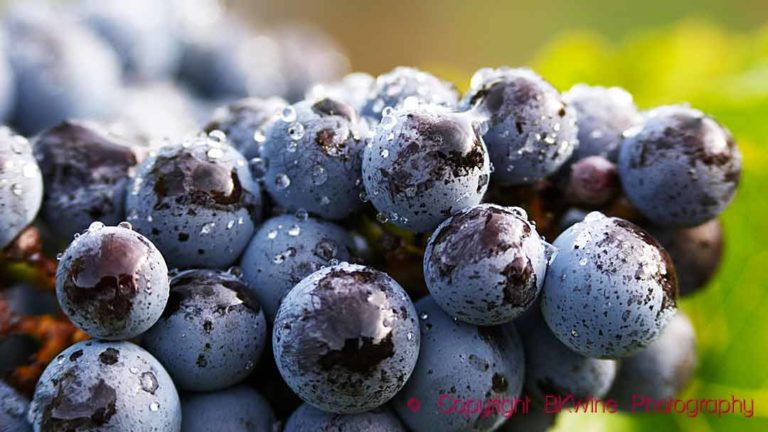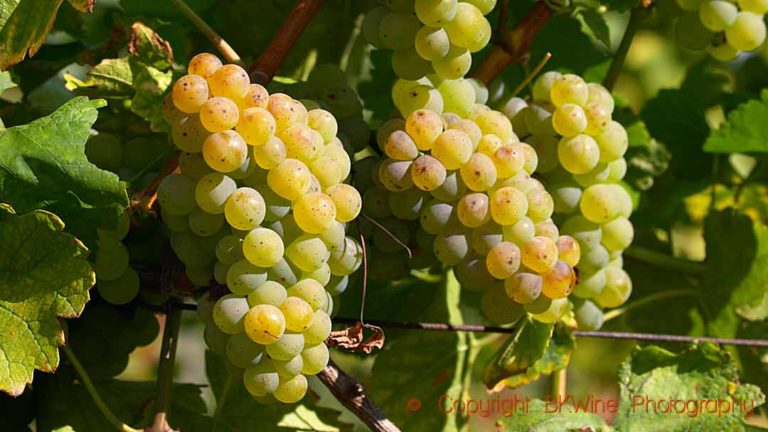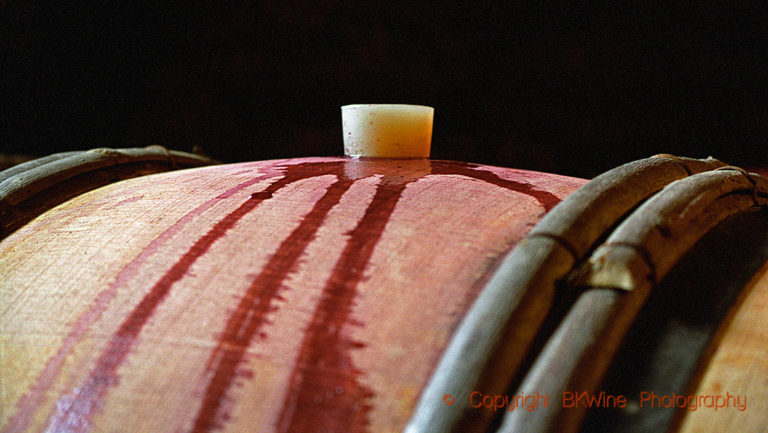California Wines had invited to a master class on the theme of “Going Sideways for Santa Barbara” under the leadership of Gavin Chanin, who represented both his own company Chavin Wine Company and several other producers in Santa Barbara.
The subject is close to my heart as I am fascinated by the efforts to make good pinot noir wines on the American west coast. As I mentioned in a previous article in April 2019 about pinot noir from California, apart from Oregon some other parts of the Central Coast are well suited for pinot noir. Among the best are the Santa Barbara County area with its AVA (American Viticultural Area, the equivalent of European appellations) and its sub-AVAs: Sta Rita Hills, Santa Maria Valley, Santa Ynez Valley, Los Olivos District, Happy Canyon and Ballard Canyon. Two AVAs just north of Santa Maria Valley, Edna Valley and Arroyo Grande Valley have similar conditions, but belong to San Luis Obispo County.
The uniqueness of the Santa Barbara area is that the mountain ranges extend from northwest to southeast, allowing almost free passage for the cool breezes from the ocean. The bedrock is varied but often lime-rich.
Santa Barbara is dominated by the two grape varieties chardonnay (3,062 hectares in 2017) and pinot noir (2,327 ha). The latter is mainly of the Burgundy clones Pommard and Dijon (113, 114, 115, 667 and 777).
Initially, Gavin gave us a brief resume with his background at Au Bon Climat and Qupé in addition to stays at wineries in Burgundy, Australia and New Zealand and an Arts degree at UCLA. A piece of trivia in this context is that the labels for several of his wines are paintings he himself made.
Gavin’s wine philosophy is to produce wines that reflect the grape’s growing location and to minimise the work on the wine in the cellar. The grapes’ planting sites should preferably contain old vines and be as cool as possible. Harvesting should preferably be done slightly before optimum maturity so as not to risk over-ripe berries. It requires very close contact with the grape producers because Gavin does not have his own vineyards but buys his grapes.
In 2007, he founded Chanin Wines in a place where he had many wine producers as neighbours in simple but appropriate premises. He initially got a place to make wine at Au Bon Climat’s premises and thanks to the contacts he got there and the skill he showed in his winemaking, he also got good openings to buy grapes from the locations he wanted. For some more info on Gavin Chanin and his wine philosophy, you can watch these Youtube interviews: Gavin Chanin with Kyle Meyer, and Gavin Chanin with Christie Petrullo.
Gavin also has a collaboration with his friend Bill Price with the name Lutum Wines.
We tasted three chardonnay, three pinot noir and three syrah.
Gavin had two of his wines in the tasting, 1 chardonnay and 1 pinot noir but from different vineyards.
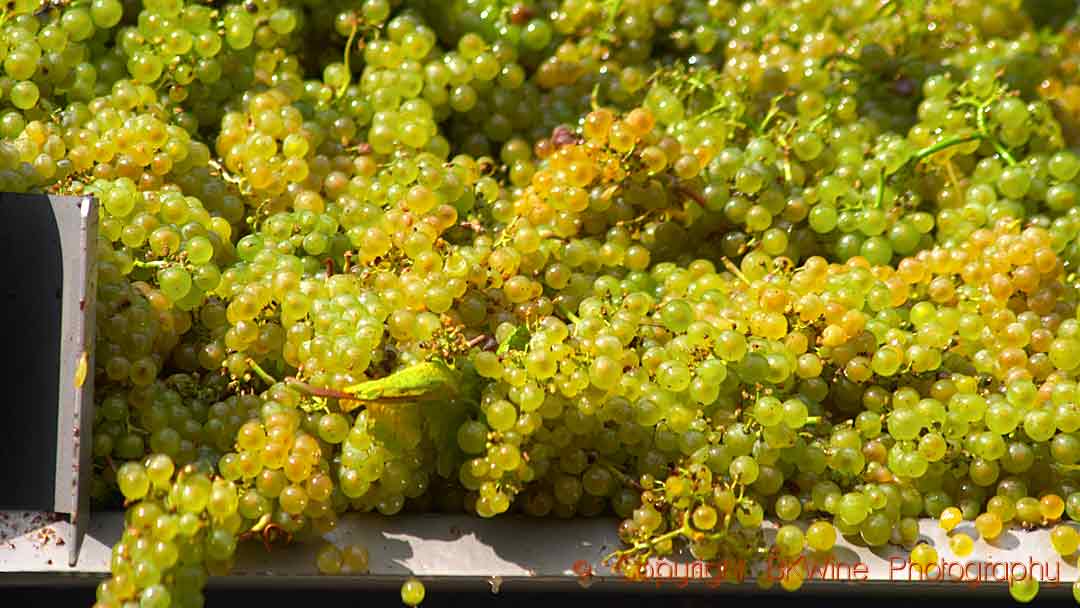
Chanin 2017 Chardonnay, Sanford & Benedict Vineyard, Sta Rita Hills AVA
Bright yellow, fresh nose with hints of butteriness, elegant taste with fine balanced acidity and fruit. As far from a traditional oaky California chardonnay you can get. Like chablis in style but very restrained. ~50 euro (approximate Swedish retail price; several wines are available on the Swedish market).
Melville 2016 Chardonnay, Estate Line, Sta Rita Hills AVA
Aroma with hints of citrus and some butteriness. Fruity taste with hints of apple and citrus, good texture and length. Oak is well balanced. ~33 euro.
The grapes come from about twenty-year-old vines on mainly sandy soils in western locations affected by cool winds. The grapes are handpicked and pressed gently with whole bunches and then the must transferred to tanks with gravity for fermentation and storage in neutral 10-20 year old French oak barrels.
Au Bon Climat 2015 Chardonnay Nuits-Blanches au Bouge, Santa Maria Valley AVA
The nose has citrus and barrels. Good grip in the fruit with taste of peach and apricot; some spice. The oak is noticeable but not intrusive. Long aftertaste. ~45 eur
The grapes for this wine come mainly from the coolest locations in the vineyards Bien Nacido (90%) and le Bon Climat (10%). Fermentation and ageing has been done in new French barriques for 18 months. The wine was bottled unfiltered.
This wine producer is sometimes called ABC and belongs to the pioneers of Santa Barbara. Au Bon Climat was founded in 1982 by Jim Clendenen who was inspired by Burgundy after a long stay there and wanted to create elegant wines on a small scale. Partner at the start of the Au Bon Climat was Adam Tolmach (see Ojai below).
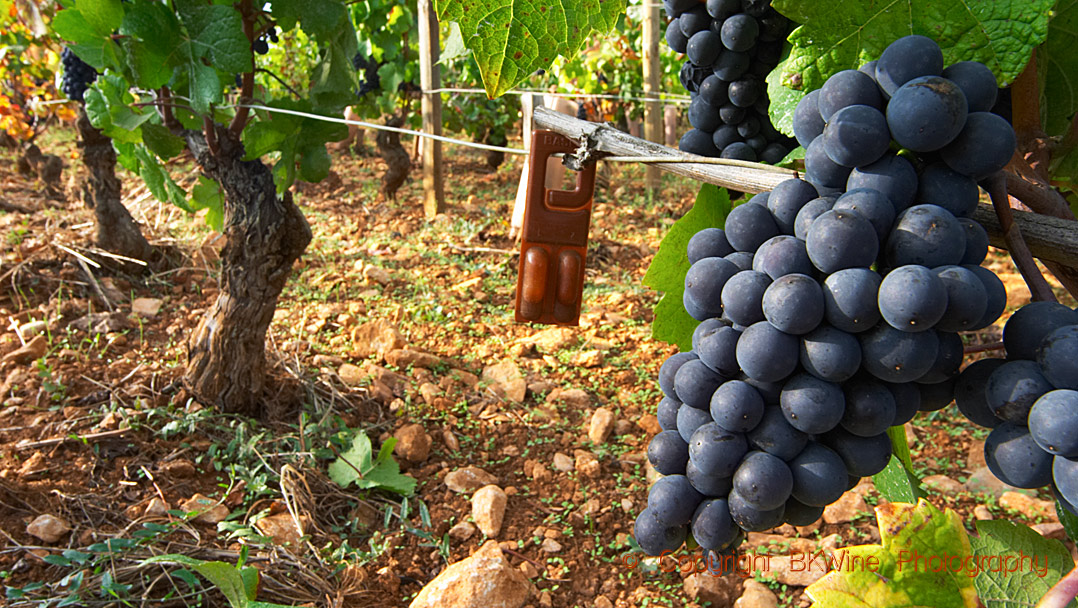
Chanin 2017 Pinot Noir, Bien Nacido vineyard, Santa Maria Valley AVA
Very light colour, scent of red berries, lingonberry, some spice. The taste is restrained with cool fruit, good balance, with acidity and tannins. Feels elegant, but somewhat restrained. Similar in style to his white wine above. Will cost ~55 eur.
According to Gavin, the Bien Nacido vineyard is very cool; half of the grapes come from old vines and half from newer plants. Whole clusters partially used in the winemaking.
Domaine de la Côte, Pure 2016 Pinot Noir, Sta Rita Hills AVA
The colour is a light shade of red, the nose is of red berries, spicy, the taste with slightly sweet fruit in the attack, but rounded off to a balanced whole with acidity, fruit and tannins and a nice aftertaste. Elegant wine for more elegant dishes. ~35 eur.
Domaine de la Côte is a collaboration between Rajat Parr (sommelier) and Sashi Moorman (winemaker) with the same wine philosophy, to make elegant and refined wines. Pinot noir is the main grape and is grown in six different vineyards with different characteristics. The grapes are harvested in balance to avoid getting too high alcohol in the end result. They use whole cluster vinification and ferment with natural yeast in open concrete vessels.
The Parr-Moorman pair is also behind Sandhi Wines, another well-known California producer and also has interests in Oregon’s Willamette Valley.
Tyler, 2017 Pinot Noir Dierberg Vineyard Block Five, Sta Rita Hills AVA
Young look and an aromatic nose of strawberries and lingonberries. Powerful taste with red fruits and with good structure, but too much oak for a perfect balance now. The wine needs a few years in the cellar to reach its full potential. ~42 euro.
Tyler Wines is run by Justin Willett who shares both premises and wine philosophy with Gavin, but he has his own vineyards in good locations which he mainly uses for chardonnay and pinot noir. All grapes are handpicked at night and then manually sorted. The pinot noir grapes may be destemmed or not. The grapes in the wine in question had been de-stemmed and the cold fruit was then spontaneously fermented with natural yeast and careful handling. Storage in barriques (30% new oak) for 12-14 months. Bottled unfiltered.
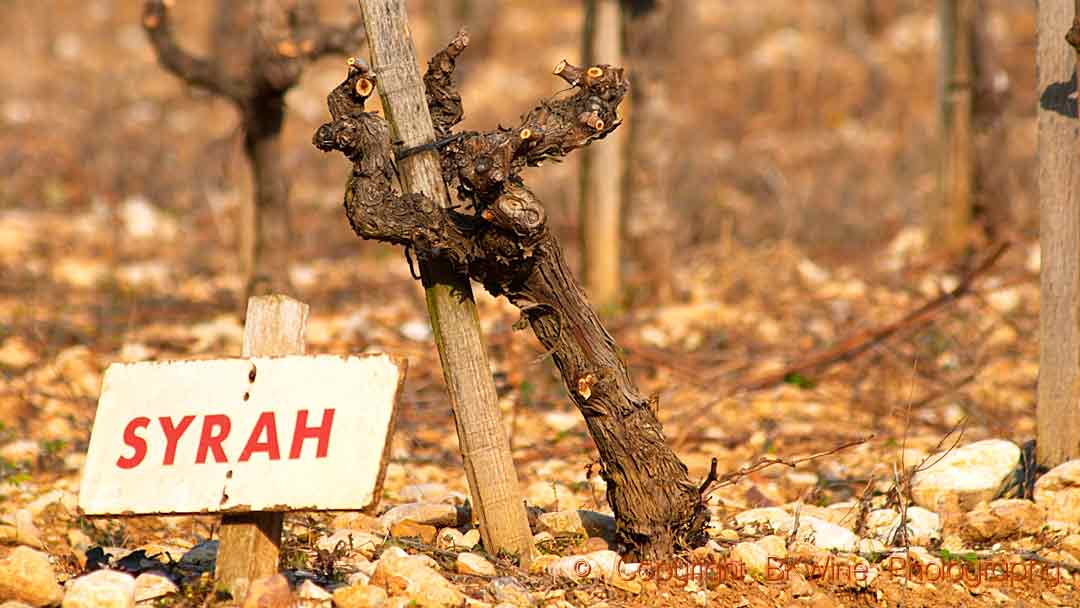
Ojai, 2017 Syrah, Santa Barbara County AVA
Here we have a completely different playing field with a nose with dark berries, dark fruits, herbal taste with a little sweetness and medium length. An easy to drink syrah with a lot of freshness thanks to relatively low alcohol content (13.5%). ~26 eur.
Ojai is a small community southeast of Santa Barbara and, since 1984, also a trademark of Adam Tolmach, one of the founders of Au Bon Climat. Adam Tolmach now belongs to those who pick their grapes early to keep freshness.
The wine in question has been fermented with about 15% whole bunches in open vessels with frequent pumping-over. After some rest, the must is transferred to French barriques (max. 10% new). Unfiltered bottling.
Kunin, 2016 Syrah, Santa Maria Valley AVA
Dark color, nose with dark berries with some spiciness, taste with good acidity, pure fruit and nice balance with the tannins. Enjoyable aftertaste. Well-structured wine with its own character. ~26 eur.
Founded in 1998 by Seth Kunin, Kunin Wines is today, after his passing, run as a “boutique winery” by his wife Magan Eng and daughter Phoebe. The focus is different when it comes to grape varieties but like the other winemakers present they are small scale and focus on elegance rather than power.
They produce 14 different wines and use grapes from renowned vineyards in Santa Barbara such as Stolpman, Jurrasic, Alisos and others. These locations are suitable for the grape varieties that Kunin initially focused on, namely syrah, zinfandel and viognier. Later, grape varieties from Loire and Rhone were added (see below). The grapes for this wine come from three different vineyard locations, and have been produced with as little intervention and additives as possible.
Qupé, 2010 Syra Bien Nacido, Santa Maria Valley AVA
The one that had the most ripe characters in the Syrah trio with some sweet fruit on the nose with dark berries. Pleasant mature taste with good structure and balance. Well-made Rhône-style syrah. ~22 eur.
Qupé Wines is, as mentioned, one of the wineries where Gavin Chanin learned about winemaking as was natural since the founder, Bob Lindquist, has a close collaboration with Jim Clendenen at Au Bon Climat. They share space and philosophy of wine and you can clearly see how these icons have had a big impact on young winemakers in Santa Barbara. It is primarily the concept of minimal intervention in a natural process that characterizes this philosophy. In the case of the Qupé wines, the focus is on producing Rhône-style wines.
The vineyards from which the grapes are taken are either certified sustainable or biodynamic. The main locations are: Bien Nacido Vineyard in Santa Maria, Sawyer Lindquist Vineyard in Edna Valley, and Ibarra-Young Vineyard in Los Olivos. The name Qupé is a Native American name for the California state flower, an orange-red poppy variety. Today, the majority in Qupé is owned by vineyard investor Charles Banks.
I can mention that Qupé is a member of the non-profit association “Rhône Rangers” whose purpose is to advance the cultivation of grapes with “cool” Rhône character. Membership requires that at least 75% of the property should be planted with grapes allowed in the AOP Rhône.
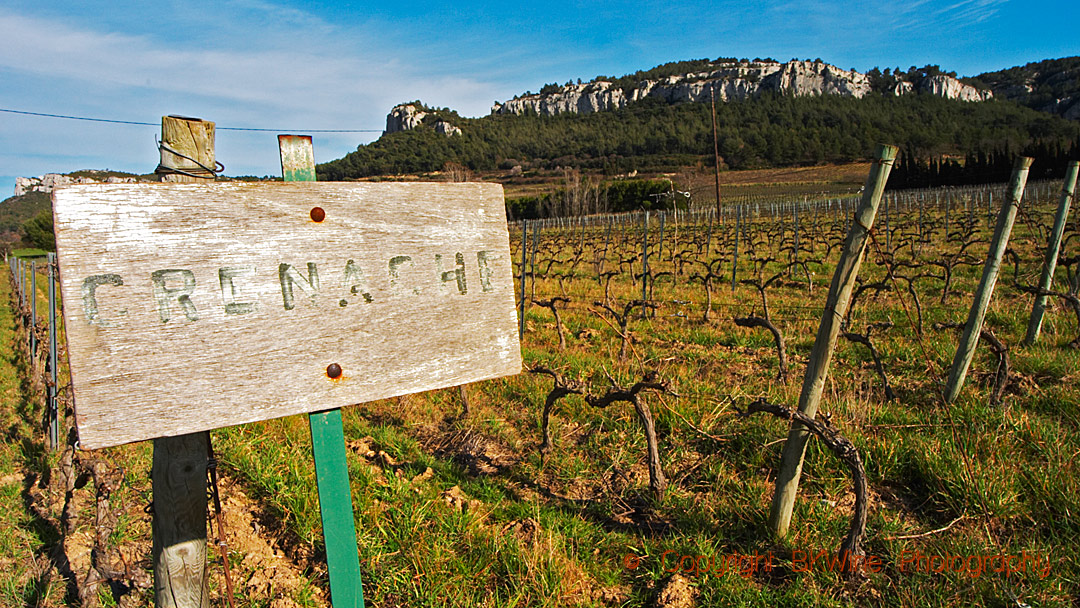
Santa Barbara’s many hills and valleys, together with many hours of sunshine and winds from the sea, provide a great variety of microclimates, and thus also the opportunity to grow many different grape varieties, in addition to chardonnay and pinot noir. Syrah is a possibility in the more eastern locations but in terms of volume it means very little today (803 ha in 2017). The Syrah wines were included in the tasting mainly to show that in the eastern parts of Santa Barbara the temperature is quite sufficient even for this grape.
The cooler climate of this area, combined with harvesting the grapes early, means that the acidity is high and the sugar contents is relatively low in the grapes. The malolactic fermentation is a must to get rid of the malic acid. Lower sugar content also results in lower alcohol content and generally more elegant wines.
Since pinot noir has a thin skin, the skins do not contribute much colour or tannins. Given that, not de-stemming all or part of the harvest can sometimes give a desirable supplement of tannins and give structure to the wine.
Gavin said that each year the use of the stems must be adapted to get the desired balance in the wine. There was no deeper reasoning about the advantages and disadvantages, but in this context I can mention that there are advocates for both extremes on the American west coast. You simply have to try yourself to find the style of wine you like best.
Gavin also mentioned that the wines from Santa Barbara are generally worth ageing, which makes the area unique in that it produces and sells wines that can be consumed in with great pleasure both young, middle-aged, or old. Three different wines in one.
Among the other producers who were present at the event, I particularly want to mention the wines from Kunin Wines which admittedly did not make any pinot noir, but on the other hand wines made on the entire palette of Rhône Valley grapes, for example syrah (wine no. 8 above). An interesting newcomer with slim and fresh wines that felt very well made. Here was both a white cuvée, Papestar Blonde, ~25 euro, mainly made from grenache blanc, and Papestar Red, ~25 eur, a red cuvée in Châteauneuf-du Pape style. Both are well worth a try.
In summary, this tasting showed significantly fewer wines of the powerful style that for many years after the “Paris tasting” made the Californian wines reputation. It is a good thing since it broadens the range of styles. Unfortunately, the dollar exchange rate still makes these wines expensive compared to competitors from both Europe and South Africa.
Carl-Erik Kanne is a long time wine enthusiast and fervent wine taster. He reports from wine tastings and wine events in Stockholm for BKWine Magazine.


